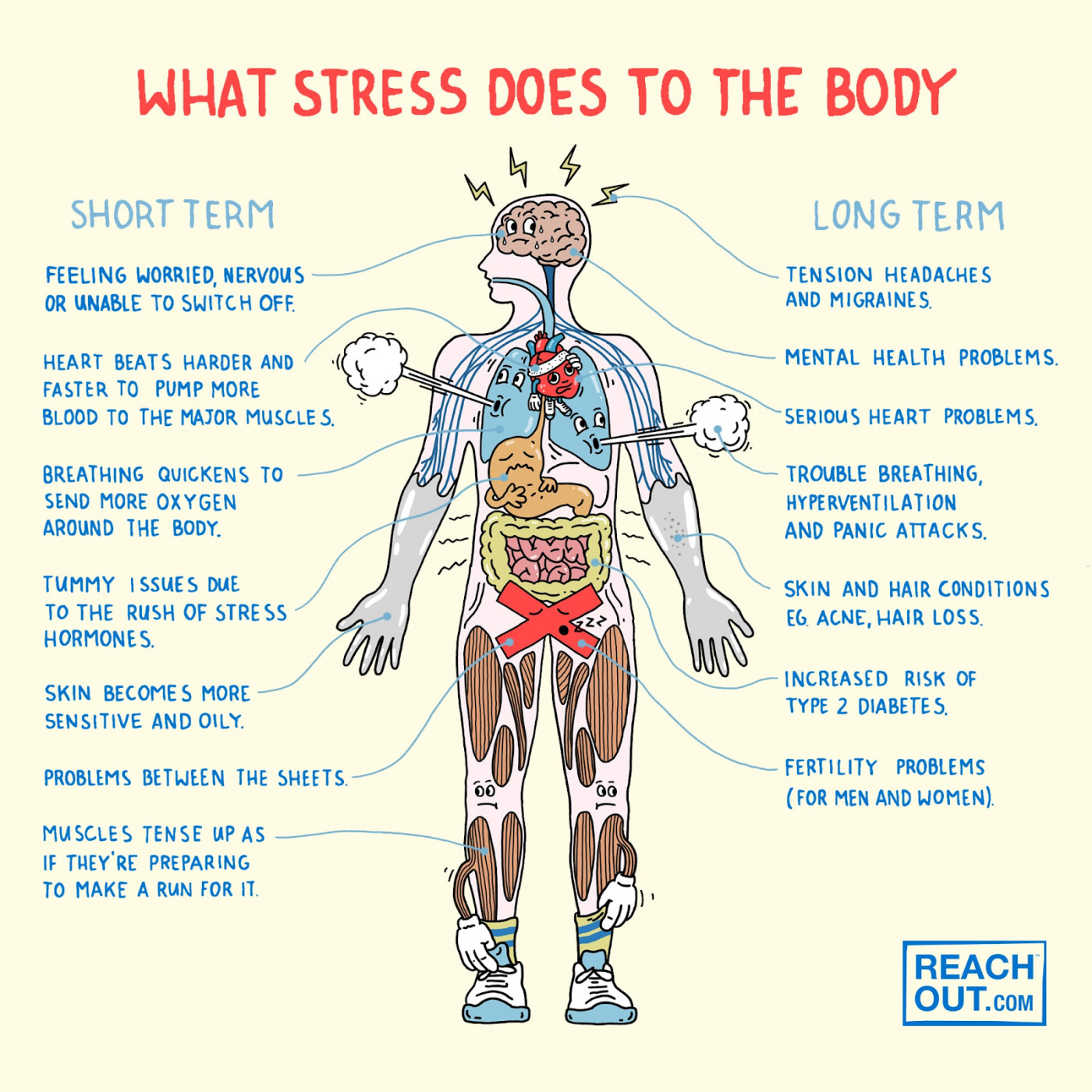
Supporting well-being at TIS
Stress is very much a part of our lives and while the origins of stress vary from person to person, we will all experience a state of stress. This may be transient for some people, or it can be long-term for others. However, both will impact our well-being and quality of life over that period of time. The origins of stress are positive, with the rush of Cortisol and other hormones triggering our fight-flight-freeze response. Historically this was fundamental in keeping humans safe and free from harm. Today, we tend to have fewer of these life-threatening dangers; meaning, that stress has evolved and is generated differently now from what it used to be.
Looking back over the last 7 years, the most stressful life situations have not changed. The Science of Health (2015), and Chan (2022), both agree that the top 5 most stress-inducing events are:
Death of a Loved one
Divorce
Moving
Major Illness
Job Loss
It may be argued that these stress-filled events occur later in life, and childhood is a stress-free time. However, this is not the case; life will always present us with challenges and stresses; However, the stressors will change over our lifetime. Lily-Jo (2021) identifies the top five stressors for children being:
Social Stress
Tracks for Development
Overstuffed Schedules
Family Stress and Change
Parental Stress
Given the significant changes in social interaction over the last 20 years, especially with the birth of social media, it is unsurprising that social stress/pressure has become the number one cause of stress in many children.

With new and changing stressors, children must be aware and equipped to manage these stresses to maintain well-being. Well-being is a "complex combination of a person's physical, mental, emotional and social factors and is strongly linked to happiness and life satisfaction" (Betterhealth Channel, 2021). A mental health study found that while one in four respondents were depressed, only one in five were happy (Betterhealth Channel, 2021). This suggests that only 20 percent of people are truly happy and satisfied.
Stressed? So What?
Research by Strelzyk, Hermes, Naumann, Oitzl, Walter, Busch, Richter, and Scha (2012) into stress, specifically the hormone cortisol, identified how Cortisol specifically impacted the brain. They concluded that Cortisol physically limits the ability of the brain to function and pass information across the synapse. In other words, Cortisol reduces the brain's ability to perform. Applying this knowledge meant that if students were exposed to daily doses of Cortisol, they would have a decreased capacity to learn or, at the very least, be hindered from doing so. It would be like swimming with a weighted vest on. This suggests that students must be in a place free from stress and in a relaxed and happy school environment to maximize their learning capabilities in a state of happiness and satisfaction or well-being.
Further research discovered that stress can impact all four of our well-being factors: physical, mental, emotional, and social (Pietrangelo, 2017). The diagram below clearly illustrates stress's impact on different areas of the body and our well-being. With such potential for harm, students must be not only taught to take ownership of their well-being, which is unique to them, and how they can manage it. This is a skill that, at times, needs to be supported. How can we support this?

Supporting Student's Wellbeing?
At Home
Referring back to the list of stressors for children identified earlier, the stressors may be generated outside of the school environment. Parents can also help ensure that students are ready for learning.
Sleep
Sleep plays a massive role in the reduction of stress and the improvement of well-being. This year, to help build better understanding, students in Grade 9 will undertake a sleep workshop to be delivered by a local professor and Sleep Expert. By the end of this exercise, we expect to achieve a significant increase in awareness about the importance of adequate sleep among children, and the processes that impact and improve well-being, thus increasing learning efficiency.
Praise & Encouragement
The most impactful and easiest tool a parent can use to improve a child's well-being is praise and encouragement, followed by a hug. Everyone likes praise, and while some teenagers may shun the parental hug, research by Raalte (2022) explains how this can impact the student's ability to manage and deal with stress saying, "hugging promotes the production of oxytocin, it is an important hormone because it can serve as a stress buffer" (Rattle, 2022). Making hugs a potential stress shield.

In School - Qualified Counsellors
At TIS, we are incredibly fortunate to have a team of qualified counsellors who works directly with students, parents, and families. The well-resourced counselling team can work to build the skills and strategies students require to navigate the stressors that are unique to each individual. The TIS counselling team comprises six qualified counsellors who bring their unique array of experiences, approaches, and expertise to their support repertoire.

Counsellors utilize various strategies that place the student at the center of the work, empowering students to explore and develop the grit and resilience they need to meet individual challenges. Finally, the counselling team is supported by a school vision that understands and accepts differences, giving everyone the sense of belonging and the equity needed to thrive. A designated curriculum that educates students in developing their personal, social, and emotional knowledge across all phases of the school is also a key part of the support at TIS. If you want to learn more about the counselling team or wish to discuss your child, please click HERE and contact one of the counsellors via the email included.

We will never fully eradicate stress from our lives or the triggers of stress that change over time. However, TIS values differences and is committed to being able to help support our community and educate students on ways to recognize and manage stress, allowing students the skills to live educated, happy, and satisfying lives.
References
Better Health Channel. (2020, May 27). Wellbeing. Vic.gov.au. https://www.betterhealth.vic.gov.au/health/healthyliving/wellbeing
Chan, K. (2022, June 22). What Are the Top 5 Most Stressful Life Events? Verywell Mind. https://www.verywellmind.com/the-top-most-stressful-life-events-5547803
Pietrangelo, A. (2020, March 29). The effects of stress on your body. Healthline. https://www.healthline.com/health/stress/effects-on-body
Project, L.-J. (2021, November 4). 5 Common Stressors for Children and How We Can Help. The Lily Jo Project. https://www.thelilyjoproject.com/2021/11/04/5-common-stressors-for-children-and-how-we-can-help/
Raalte, L. (2022, April 19). 4 Significant Physical Benefits of Hugging | Psychology Today. Www.psychologytoday.com. https://www.psychologytoday.com/us/blog/close-communication/202205/4-significant-physical-benefits-hugging
Reachout. (2019). What stress does to the body (and what you can do about it). Reachout.com. https://au.reachout.com/articles/what-stress-does-to-the-body
Strelzyk, F., Hermes, M., Naumann, E., Oitzl, M., Walter, C., Busch, H.-P. ., Richter, S., & Schachinger, H. (2012). Tune It Down to Live It Up? Rapid, Nongenomic Effects of Cortisol on the Human Brain. Journal of Neuroscience, 32(2), 616–625. https://doi.org/10.1523/jneurosci.2384-11.2012
The Top 5 Most Stressful Life Events. (2015, July 1). Www.uhhospitals.org. https://www.uhhospitals.org/blog/articles/2015/07/the-top-5-most-stressful-life-events



